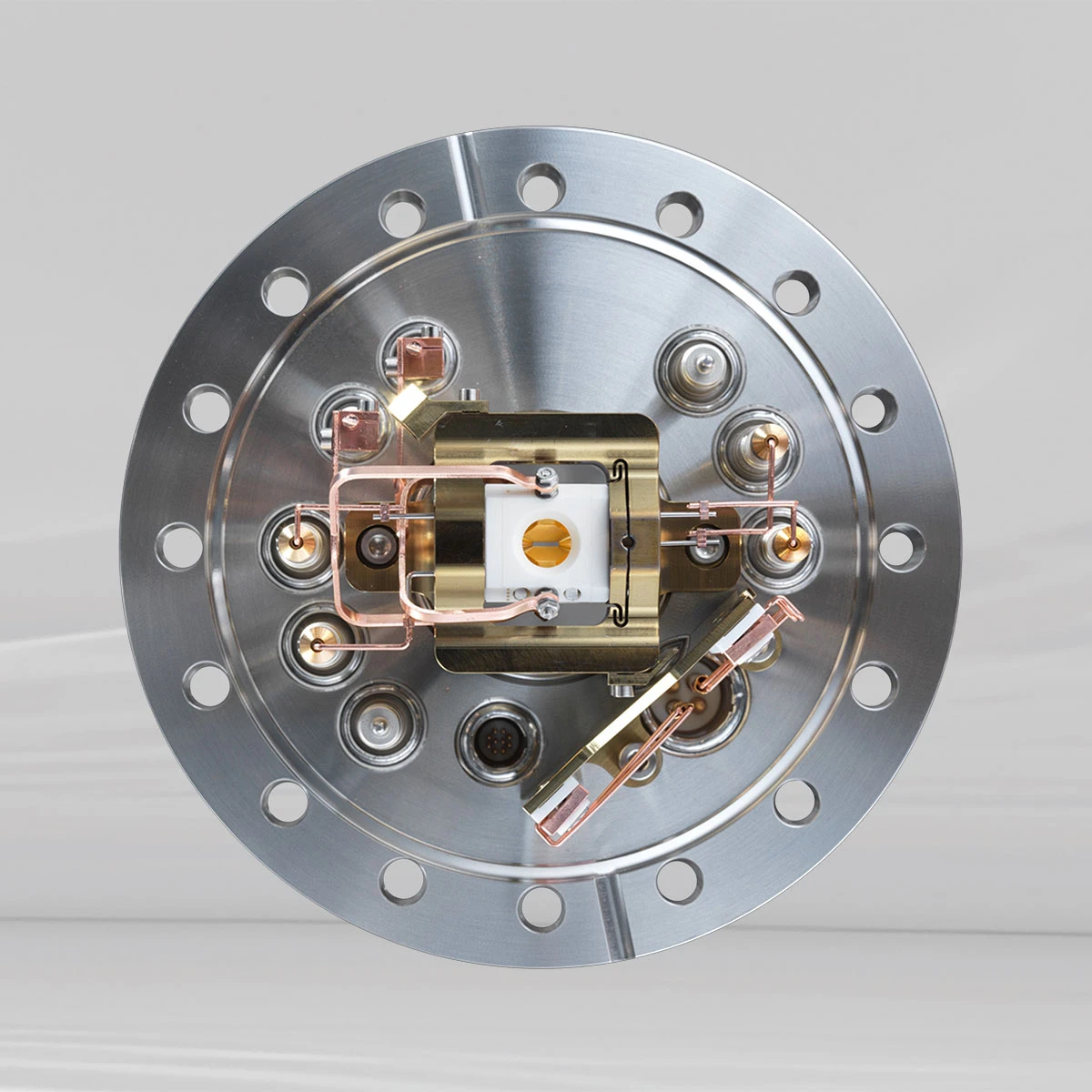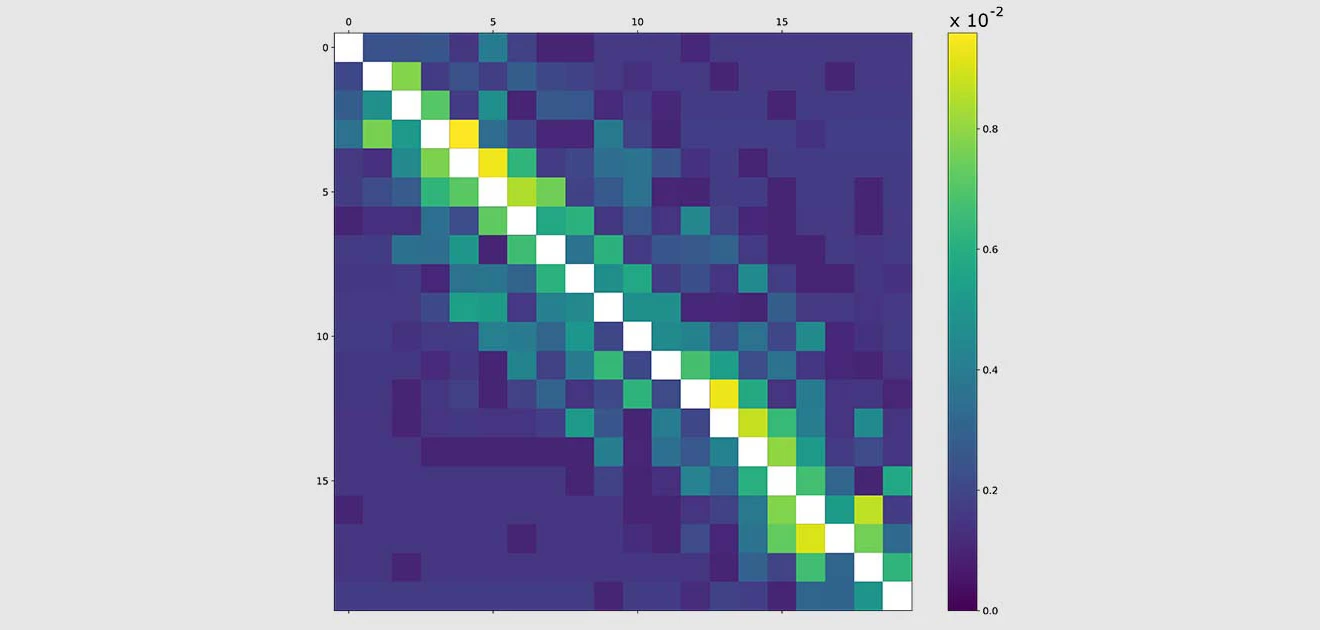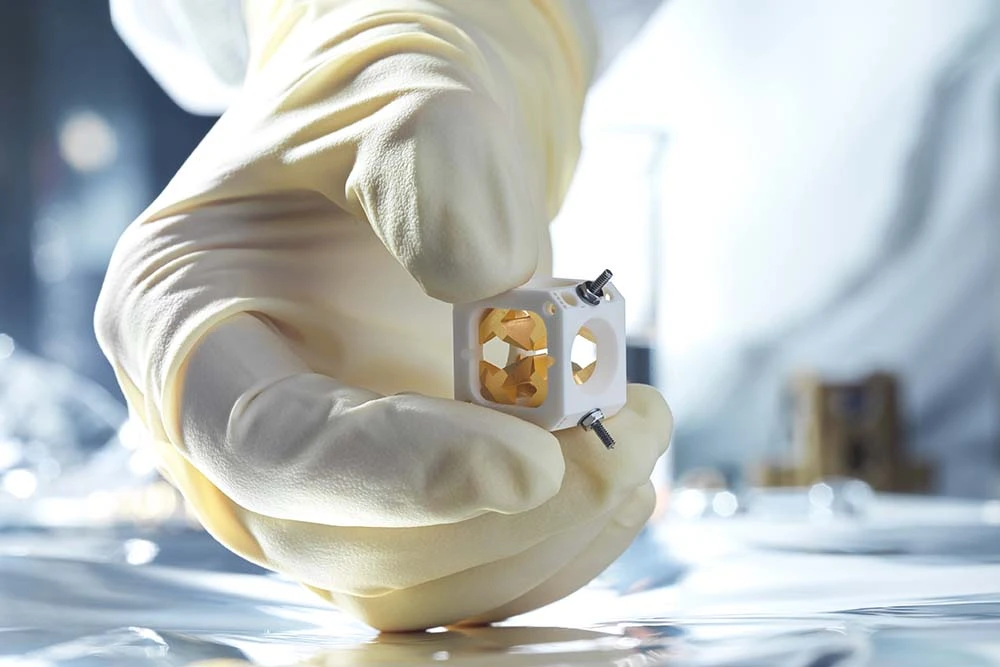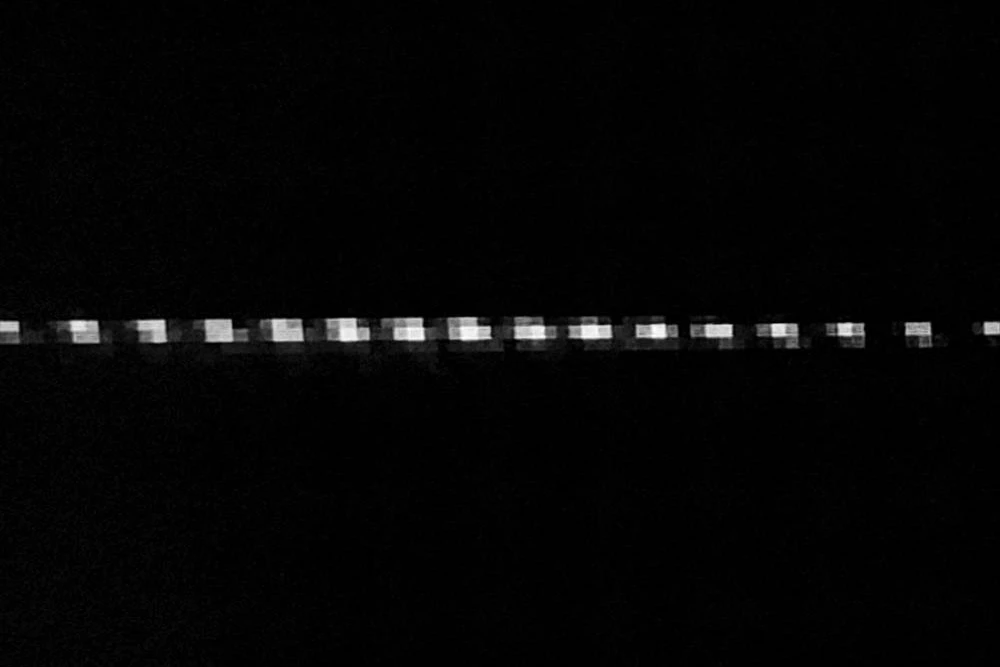Access 20 fully-connected qubits using a 19” rack.
We offer a fully functioning 20-qubit quantum computer, ready for integration into existing IT infrastructure and cloud accessibility, inside a standardized 19” rack.
The individual qubit control in the AQT Pine trap is demonstrated by a measurement showing the crosstalk between the qubits, here exemplified for a 20 qubit register. A single qubit out of the chain is addressed and excited individually and coherently by a laser beam. The influence of this operation on the surrounding qubits is monitored and quantified. This procedure is repeated for all register qubits, and the cross-talk percentages are documented in a matrix.

We offer a fully functioning 20-qubit quantum computer, ready for integration into existing IT infrastructure and cloud accessibility, inside a standardized 19” rack.
The individual qubit control in the AQT Pine trap is demonstrated by a measurement showing the crosstalk between the qubits, here exemplified for a 20 qubit register. A single qubit out of the chain is addressed and excited individually and coherently by a laser beam. The influence of this operation on the surrounding qubits is monitored and quantified. This procedure is repeated for all register qubits, and the cross-talk percentages are documented in a matrix.

We offer 20 qubits ‘out the rack’.
Our fully-connected quantum register allows you to connect any qubit to any other qubit without a computational overhead which generally reduces the performance.

20-qubit algorithms – and no thought spent on connectivity
Our fully-connected quantum register allows you to connect any qubit to any other qubit without a computational overhead that generally reduces the performance.
Cross-talk between qubits is undesired – and at a fault-tolerant level in our solution.
Reduced cross-talk allows end-users to implement algorithms without considerations to know or implement hardware-specific error mitigation techniques.


Scalability via quantum error correction requires error rates lower than 1%. Here we demonstrate cross-talk error rates at the 1e-5 level.
The low error rates provide confidence that AQT offers long-term solutions that enable error correction routines out of the box, supporting more qubits and even lower errors.
Our PINE system is the first quantum computer that fits inside two standardized 19” racks. Building on top of the ion-trap quantum computing platform pioneered in Innsbruck, Austria, tens of ion-qubits can be worked with. Here we provide a teaser on the characterisation of operating and 20 qubit quantum register. The characterisation shows out-of-the–box performance compatible with fault-tolerant quantum computing.
In our ion-trap quantum computer, we move a laser beam onto the position of an ion or multiple ions. Discrete laser pulses onto the ions change the encoded quantum information. Ideally, the laser light would hit only the targeted ion(s) and nothing else. Here we characterize the undesired coupling of the laser light field via the coupling strength of non-targeted ions relative to the addressed ion-qubit in a 20-qubit register. We show average coupling to next-neighbor qubits of 0.6%. In the future, we plan to add additional error mitigation routines that allow suppression of this value to the 1e-5 level. Such levels are compatible with what is currently considered necessary for fault-tolerant quantum computing.
These low values show that end-users can execute quantum algorithms on our device without considering error mitigation routines. We support a wide range of quantum software development kits such as Qiskit, Cirq, Pennylane, Pytket, … existing code can be readily tested on our devices without requiring detailed knowledge of the underlying hardware.
To date, our solutions have been used to demonstrate a universal gate-set for logical qubits.
Should you have some particular use case in mind, please let us know.
© Photocredits: Dieter Kühl
